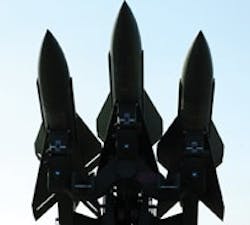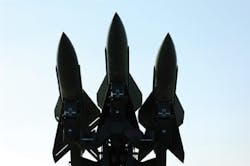Model-Based Control of Fast Processes
This article was printed in CONTROL's December 2009 edition.
"Ask the Experts" is moderated by Béla Lipták, process control consultant and editor of the Instrument Engineer's Handbook (IEH). The 4th edition of Volume 3, Process Software and Networks, is in progress. If you are qualified to contribute to this volume, or if you are qualified to answer questions in this column or want to ask a question, write to [email protected].
Q: I was perusing some of the unanswered threads on ControlGlobal.com's Usability Project forums (www.controlglobal.com/usability/) and came across a question regarding model-based control, and, more specifically, processes that are too fast-moving for traditional model-based control (MBC) approaches.
Naturally, I thought you might have some valuable perspective to share. The question follows:
"The traditional approach to advanced control is complex, expensive and slow. Model-based predictive control like DMC and RMPCT (robust multivariable predictive control technology) involves the use of a supervisory system (typically at L3 in S95 terms), and communicates with the DCS using some type of OPC (or CIMIO) interface. This requires transferring all inputs and outputs for every scan of the controller—usually including a variety of watchdogs, verification steps, etc.
The effect of this standard architecture is that APC applications typically run slowly (1 to 2 minutes, compared to 1 to 2 seconds for a PID controller). Also, the interface is not sufficiently robust for the controllers to operate directly onto valves, so a shedding logic and a fall-back regulatory scheme implemented locally in the DCS are required. For large, unit-wide applications, this is not normally a problem, and APC applications continue to grow in size and complexity. But does this miss an opportunity?
Process plants are littered with small, fast, interactive systems. The concept behind MBC is potentially a fabulous solution for control of these systems, but the way it is traditionally implemented prohibits its use because it's too slow and too difficult.
A plant that I worked on had a classic example—a plant feed was split across two parallel vaporizers with knock-out pots on their vapor lines. An additional interaction between the two trains came because the overflow from both knock-out pots was returned to only one of the vaporizers. The system was fast (settling time about 10 sec.)and very interactive. We could not use DMC because the CIMIO/OPC interface could not operate fast enough, and decoupling the process using conventional technologies was difficult to do and harder to maintain.
How common is this problem? I would really like to hear about applications that you wish you could use APC on, but can't do so currently because of the speed, cost and complexity of traditional approaches to advanced control."
Keith larson
[email protected]
A: For any job, we need the right tool. We don't use a hammer to drive in a screw. This is the same with control. PID is a tool and MBC is a tool, and we use each when needed, not just because it's available.
In process control, we first review the process before figuring out the right controls for it. We don't just accept the process as a given, but first analyze how it could be made more "controllable."
Having said that, I would note that as long as the manipulated variable is 10 times faster (including dead time) than the controlled one, speed should not be a problem when PID is implemented in a DCS. When I say this, I am talking about seconds. When the time constants are in milliseconds and less (say missile guidance), DCS is obviously too slow, and we use faster tools. For example, in guiding a projectile, we might use tunnel control algorithms (three-dimensional gap control), so that no adjustment is made until the projectile approaches the wall of the control tunnel.
So as far as your process is concerned, first check the process and next, use PID implemented in DCS. Now, please also read the comments of my colleagues to get a balanced view on this.
Béla Lipták
[email protected]
A: Most MPC (or APC) projects are used to push the process to its limits, and handling constraints is key. When MPC is used because of strong interactions, using advanced regulatory control is the best way to do it, particularly if the number of variables is low (i.e. 2, 3 or 4). Hence, after defining needs and objectives, the process control engineer will develop appropriate control strategies using override control, feed-forward, etc.
Michel Ruel, PE
President of Top Control
www.topcontrol.com
A: I don't know why anyone would want to use MPC on a fast process. PID control has a higher performance, and PID with dead time has the highest performance of all controllers. For interacting loops, bilinear decoupling and feed-forward using first-principles models are more effective than linear dynamic matrix control as well.
Greg Shinskey
[email protected]
A: Fast processes such as the one you describe in your letter can often be handled at the regulatory level using "intelligent" control algorithms implemented in the DCS. These algorithms can execute at the DCS execution frequency, and do it without the need for the complex and slow interface between the DCS and the MPC software.
For example, we've written generic control algorithms for multiple-input, adaptive feed-forward, decoupling, and "smart" PID in the TDC 3000 Application Module and other DCSs. If designed properly, the feedforward and decoupling algorithms provide a form of "model-predictive" control, and the "smart" PID algorithm actually provides feedback control that is superior to conventional MPC. (Remember, the only mechanism for feedback control with conventional MPC is by adjusting the bias between the predicted and actual values of the control variables at each execution—sort of integral-only control.)
Figure 1. Very fast processes with short time constants (on the order of milliseconds) may benefit from missile guidance algorithms describing non-intervention until the fast-moving projectile approaches the tunnel wall.
These algorithms can be executed every 1-2 sec, if needed. Versions of these algorithms will obviously also run in Foxboro I/A, DeltaV, Experion, Yokogawa and any other DCS that provides the control engineer with the ability to implement user-written programs of medium complexity.If you'll send me a sketch of the dual-vaporizer system, showing all the control valves and process measurements, I will be happy to suggest a control solution that could be implemented in the DCS—assuming you have a DCS that provides some programming capability.
Dr. James R. (Jim) Ford, PE
www.mavtechglobal.com
A: This seems to be a general question, so here is a general answer. I too think that as long as the controller can calculate appropriate MV action and the final control element can act faster than the process, then control should be good. But, there are two qualifiers: appropriate and faster.
Appropriate: If the missile aerodynamic model is generated for mid-tunnel performance and doesn't include near-wall drag, then control may deteriorate near the wall. In the chemical industry, MPC applications deteriorate when the process moves away from the operating conditions that generated the model, and enter a region that changes the nature of influences.
Appropriate Controller Tuning: A nonlinear process would need the controller to be tuned differently for steering in one direction than another as the process industry also experiences processes that move faster in one direction than another, or in one operating condition than in another. Gain scheduling is a common solution. If the model is appropriate, then in MPC, either the move suppression factor, or the trajectory damping factor could be adjusted dependent on the conditions.
Faster: A rule of thumb is that there should be 10 control actions within one process time constant. This could be expanded to include delay or dead time and the final element dynamics. The control influence (controller plus final element) should have a response time (delay plus three time constants) that is at least one-tenth of the process response time (delay plus three time constants).
Further, if there are secondary controllers, they should have a response time that is at least one-fifth of the primary controller. The rule needs to guide control frequency and final element dynamics in the operating conditions that lead to the fastest process response.
R. Russell Rhinehart, PhD
[email protected]


